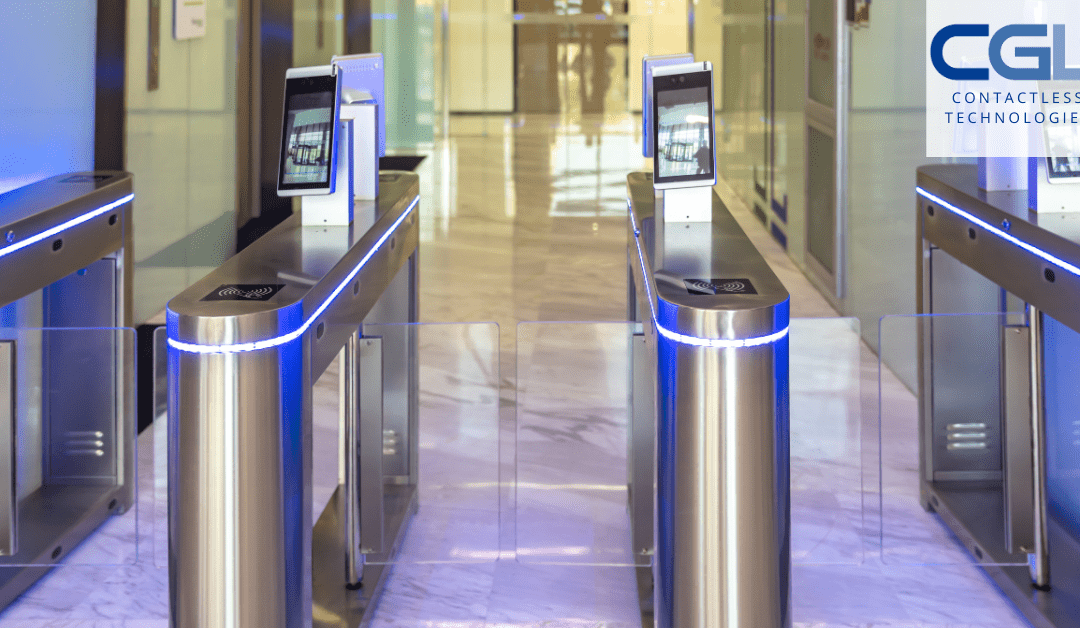The security, finance, transportation, and healthcare industries are not far away from a simple wave or glance that will completely replace swipes, signatures, and physical contact. Contactless technology has evolved over the past decade and will only expand in the future. NFC, RFID, and other technologies are transforming how we live, work, and interact.
Contactless technology has infiltrated every aspect of life, from convenience payments to security, from enhancing retail to revolutionizing healthcare and smart homes.
Contactless technology provides businesses and consumers with a faster, safer, and more efficient way to connect. But how will it affect the future?
Evolution & Growth
The broader technological shift that has paved the way for the seamless-touch-free experience of today was not a walk-in-the-park journey. The COVID-19 pandemic has been one of the most catastrophic pandemic eras, but it has redefined how the future will look. It acted as a catalyst and made the way out for the global adoption of contactless technology. Contact was the key transmissible route for COVID, and the world was desperately searching for ways to cut down, which pushed businesses and consumers to embrace contactless solutions. It became a part of the parcel of healthcare and industries as they rapidly integrated those technologies to meet the globally changing demands. What once seemed like a fancy innovation has now become a necessity.
Key Applications of Contactless Technology
Contactless technology has made some key applications which is a fundamental driver of efficiency and innovation across industries.
-
-
- Security: Contactless technology has changed how we address security, especially when it comes to access control. Mobile credentials, biometrics, and RFID or NFC systems make it easier to get in and out without touching anything. This cuts down on security risks and keeps unauthorized people out. Security teams can also track who’s coming and going in real time, immediately spotting anything unusual. Plus, with cloud-based management, access can be controlled remotely, and credentials can be updated instantly.
- Payments: Where were once termed as unfamiliarized stuff that includes Tap-to-Pay, QR codes, and digital wallets, are now present everywhere. It has reshaped transactions making them more secure, rapid, and effortless for customers.
- Transportation: From long queues to get tickets to contactless metro cards, from cash payments to built-in digital payments, commuting has never been easier, thanks to contactless technology.
- Retail: It’s rush hour, and you’re stuck in a long queue to get your stuff scanned. Making the transaction will not be a problem anymore. Cashier-less stores introduced by Amazon are a reflection of future retail stores that enhance the overall shopping experience.
- Healthcare: LMS-based patient check-ins, AI-driven remote monitoring, and diagnostics have curtailed the burden on health setups of developed countries. What used to be a weekly wait for an appointment has seen a significant bloom as everything has gone contactless.
- Smart Homes & IoT: Our living spaces have seen a major shift since the arrival of stuff like Alexa. Those voice-activated assistants, keyless entry systems, and automation have revolutionized the ways we interact with living spaces.
-
The technology is now setting a new industry standard, operating and influencing almost every operation and reinforcing security. Organizations who embraced these technologies earlier have seen significant bloom compared to the ones who showed resistance accepting them.
Future Trends in Contactless Technology
Some of the key trends that are going to shape the future include:
AI-Powered Gesture Control: AI-based advanced sensors leverage touch-free experience to its newer heights. Retail stores have experimented with motion-based kiosks that empower users to quickly browse products with a simple hand gesture. In smart homes, everything can be operated with voice without having to touch anything.
Blockchain for Security & Transparency: Cash is going to disappear soon as contactless payments are becoming a norm. It certainly comes with security risks, but the blockchain is addressing security concerns by enabling decentralized tamper-proof transactions. Digital wallets guarded by blockchain have curtailed fraud risks as the supply chain management looks forward to utilizing it to maintain transparent, immutable records, ensuring impeccable data integrity and privacy.
5G & IoT Integration: Let’s be honest; traffic management was nothing short of migraines for both daily commuters and the government. But since the advent of 5G and IoT integrations, smart cities are being run as these technologies provide real-time monitoring which has optimized traffic management. Moreover, industry equipment failure was once deemed a natural disease, but since the advent of these technologies, predictive analysis can almost preempt and prevent equipment failure. Retailers have leveraged 5G by setting up personalized shopping experiences for consumers and letting them track their inventory in real time.
CONCLUSION
Contactless technology is a benchmark of advancement as it represents transforming industry operations. Organizations have gained significant benchmarks and enhanced customer satisfaction from streamlined payment solutions to AI-based traffic management, from AI-powered healthcare to AI-based security management. As technology advances, it certainly leaves the gates wide-opened for the element of significant risk so robust cybersecurity measures should be ensured to counter those challenges and prevent the marginalizing of vulnerable populations.
We are probably advancing into an era where physical interactions would be optional rather than mandatory. However, it demands that the balance between ethical concerns not topple over as innovations progress. Organizations investing in secure and inclusive solutions will continue to evolve in this existing landscape, while those turning deaf ears and blind eyes will see a significant decline in their growth. The question isn’t even whether contactless technology will prevail or not but how we can optimize responsible usage and maximize the beneficial outcomes of this technology.
To learn more, visit the CGL website or contact me at mikem@cglsecurity.com.
Mike McGuirk
Vice President of Sales
CGL Electronic Security
Copyright 2024
Disclaimer: A percentage of text in this article may have been generated by or was used to help improve SEO, grammar, spelling, punctuation, and other writing aspects by AI, which is intended to be informative and helpful.

